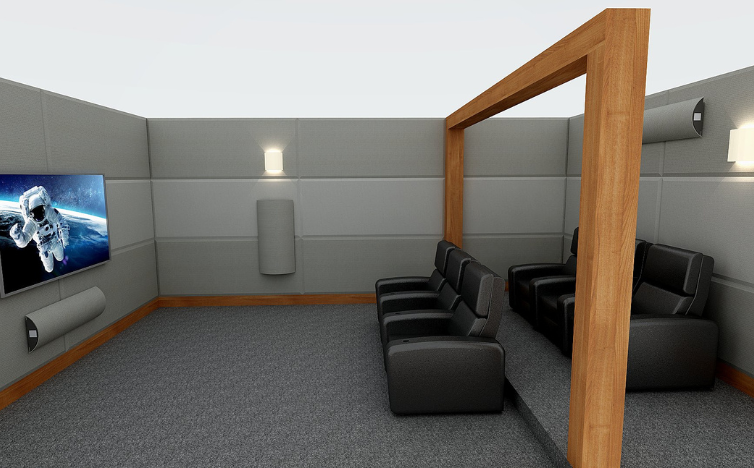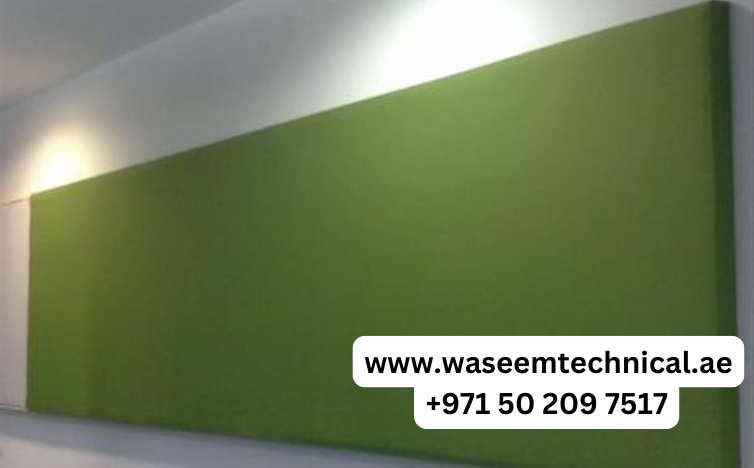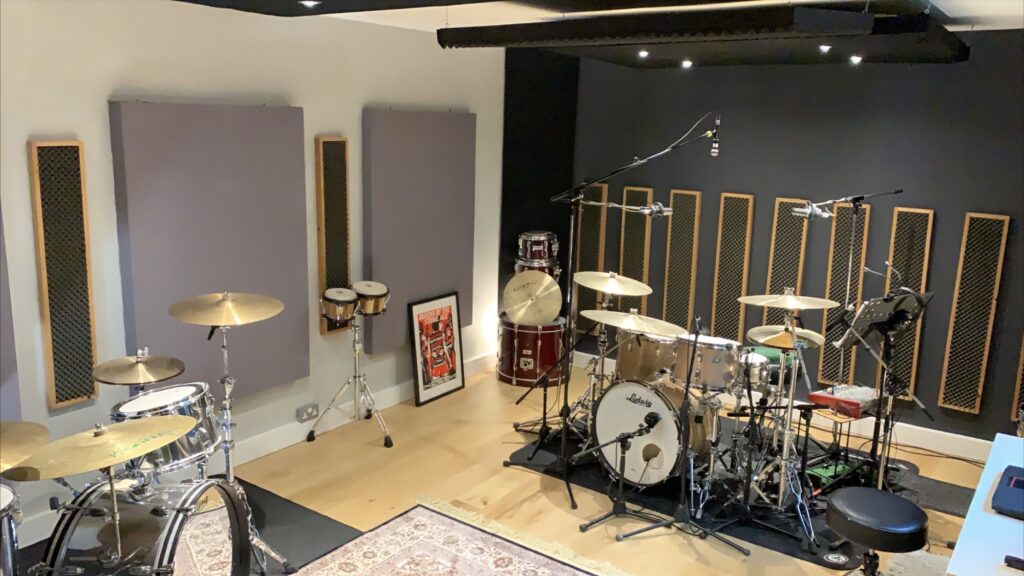Stretch fabric wall panels are an effective and stylish way to improve sound quality in spaces like offices, studios, and homes. They not only control sound but also add a modern touch to any room. Here’s a comprehensive guide to help you select the perfect stretch fabric wall panels that meet your design and acoustic needs.
Steps to Choosing the Perfect Stretch Fabric Wall Panels

1. Understand the Acoustic Needs of Your Space
Before diving into styles and colors, determine your space’s acoustic needs. Different rooms have varying sound requirements:
- Recording Studios and Home Theaters need high sound absorption to reduce echoes and enhance audio quality.
- Offices and Meeting Rooms require sound-dampening solutions to maintain privacy and reduce noise distractions.
- Living Rooms and Restaurants benefit from moderate sound control to balance aesthetics with acoustics.
Understanding these needs will help you decide on the fabric density, thickness, and sound absorption qualities required for your stretch fabric wall panels.
2. Choose the Right Fabric for Your Panels
Selecting the right fabric is essential for the effectiveness and longevity of your wall panels. There are several types of fabrics to consider:
- Acoustic Fabrics are designed specifically for sound absorption. These are ideal for high-performance spaces like studios.
- Polyester Fabrics offer durability and are easy to clean, making them perfect for high-traffic areas.
- Cotton Fabrics add a soft, natural look and are eco-friendly but may require additional maintenance.
The fabric should meet your room’s durability and sound absorption requirements. Acoustic fabrics are typically best for spaces where sound control is a priority.
3. Consider the Aesthetic of the Space
Stretch fabric wall panels come in a variety of colors, patterns, and textures. Think about how the panels will complement the rest of your interior design:
- Color Scheme: Choose colors that either blend with or contrast against your existing décor. Neutral tones work well in offices, while bold colors can enhance creative spaces like art studios.
- Patterned vs. Solid: Patterns can add visual interest but may be too distracting in spaces that require focus. Solid colors are versatile and often preferred for professional environments.
- Texture: Textured fabrics can add depth and dimension to your room. Textured options work well for spaces where aesthetics are a priority, such as lobbies and restaurants.
4. Determine the Installation Process
Stretch fabric wall panels can be customized and installed in a few ways, depending on the space and your budget:
- Direct Mounting: This is a more permanent solution where panels are fixed directly to the wall. It’s best for rooms where sound control will be needed long-term.
- Track System: Using a track system allows for easy installation and removal of panels, which is ideal for multi-purpose rooms or spaces where aesthetics may change over time.
- Freestanding Panels: If you’re renting or don’t want a permanent installation, freestanding panels are a great solution for flexible sound control.
Discuss these options with your installer to choose the best approach based on your room’s needs and future plans.
See Also: Step-by-Step Guide to Installing Stretch Fabric Wall Panels
5. Select the Proper Panel Thickness
The thickness of your stretch fabric wall panels plays a major role in their sound absorption capacity. Thicker panels absorb more sound but may not be necessary for every setting:
- Thin Panels (1 inch or less): Best for light sound dampening in home and office environments.
- Medium Panels (1–2 inches): Ideal for spaces where moderate noise control is needed, such as restaurants and conference rooms.
- Thick Panels (2 inches or more): Perfect for high sound absorption needs, such as in recording studios or home theaters.
Choose a thickness based on the noise levels in your space and how much sound you need to manage.
6. Factor in Maintenance Needs
Fabric panels require regular maintenance to retain their appearance and function. Here’s what to consider:
- Ease of Cleaning: Select a fabric that’s easy to clean, especially for spaces with high foot traffic like hallways or dining areas.
- Stain Resistance: In areas like restaurants, opt for fabrics that resist staining to keep panels looking fresh.
- UV Resistance: If the panels are in direct sunlight, choose UV-resistant fabrics to prevent fading over time.
Maintenance needs are particularly important if the panels are in public or high-use spaces, ensuring they maintain their aesthetic and acoustic performance.
7. Review Your Budget
Stretch fabric wall panels come in a range of prices depending on material, customization, and installation type. Keep the following in mind:
- Material Quality: High-performance acoustic fabrics may cost more but are essential for spaces with demanding acoustic needs.
- Customization: Custom colors, patterns, and textures can add to the cost but allow you to match panels with your interior design.
- Installation Method: The type of installation chosen can impact the overall budget, with direct mounting often costing less than track systems or freestanding options.
Set a budget based on the importance of sound control and the aesthetic you want to achieve for your space.
Call us: Contact Waseem Technical Soundproofing Expert in Dubai For Soundproofing: +971 50 209 7517
Final Thoughts
Choosing the right stretch fabric wall panels requires a balance between functionality, style, and budget. By assessing your space’s acoustic needs, aesthetic preferences, and maintenance requirements, you can find panels that will enhance both the sound and look of your room. Whether for a recording studio, office, or restaurant, the right wall panels make all the difference.




